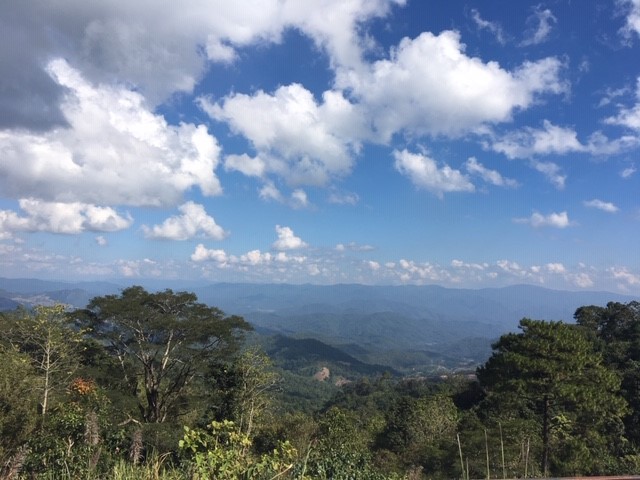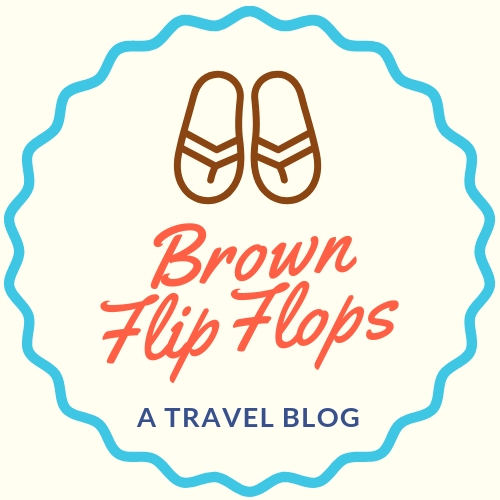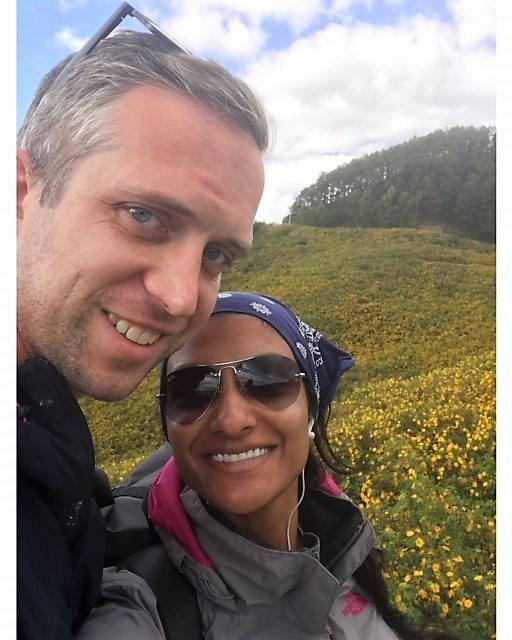Mae Hong Son Loop in Thailand: How to Do it Right
As I mentioned in the post about Chiang Mai, we rented a motorbike for a week-long journey on the Mae Hong Son Loop. Some people decide to do the loop in 4 days, but we opted for the more leisurely tour, spending 7 days on the loop, so that we weren’t driving every day. There are two ways to do the loop. You can make the trek around the loop either clockwise or counterclockwise. We traveled counter-clockwise since it’s supposed to be easier for the more novice riders; the leg from Chiang Mai to Pai has a lot of curves and up-hill climbs. Fortunately, the roads are in great condition so you don’t have to stress about that part.
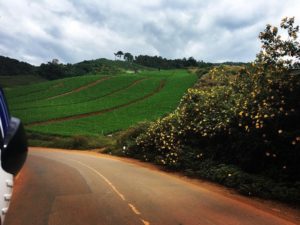
We stopped in the following places along the loop: 1) Mae Sariang, 2) Mae Hong Son, 3) Soppong, 4) Pai, and 5) Chiang Mai (our start and end point) with some pitstops along the way. On average, expect to travel around 4-5 hours between each stop on the loop. We really lucked out on our journey as we had sunny weather and pleasant temperature the whole time; however, make sure that you pack some warmer clothes because it gets cooler in the mountains (especially in Soppong and the surrounding area). I recommend packing a fleece and a pair of jeans, and maybe even a mini first aid kit in case you get some scratches. We, fortunately, didn’t have any accidents, but we have met fellow travelers who had some scrapes and bruises from minor incidents on the bike – so be careful!
1. Chiang Mai to Mae Sariang
To get from Chiang Mai to Mae Sariang, you’ll jump on route 108 leaving Chiang Mai. It’s a pretty easy ride and getting out of Chiang Mai is not an issue. Mae Sariang is a sleepy little town with a couple of nice hotels by the Yuam River that you can choose to stay in. There really isn’t much to do in this town so it served as a good stopover place to rest our heads. We chose to eat at Coriander in Redwood since we didn’t eat any lunch and we were in the mood for a substantial meal. We ordered spring rolls, larb gai, a steak, and then topped it off with a brownie sundae (the brownie was homemade-delish!). There’s a pub in town called Pa Ka Yor’s Pub and Restaurant with a pool table if you want some entertainment.
Accommodations
We stayed at the Tamarind Grand Resort (not so grand and not much of a resort). It was more of rustic bungalow, but the charm of the place was captured in the morning view at breakfast where we overlooked the adjacent rice fields and mountains.
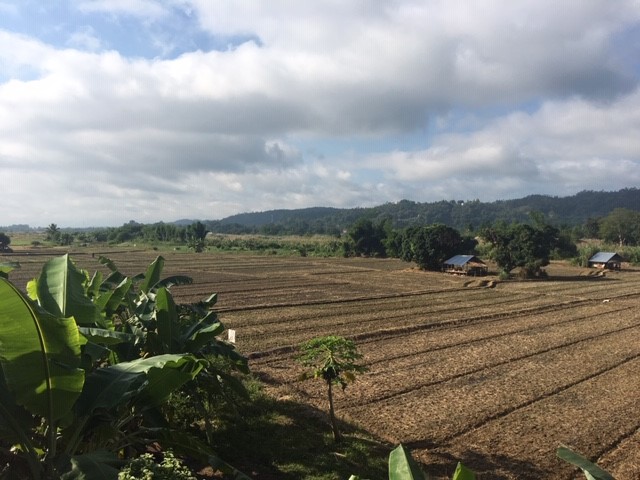
We realized traveling through SE Asia that hotels will use names like “luxury” or “resort” very liberally. The place; however, was clean and was suitable for one night. There are a couple of other spots in town that are luxurious for Mae Sariang and include a pool, like the Riverhouse Resort, but they were outside of our budget.
2. Mae Sariang to Mae Hong Son
The next morning, we jumped back on the motorbike to make the 6-hour journey to Mae Hong Son (it’s 4 hours if you don’t make stops along the way). Our first stop was for coffee to taste the local brew and take in the mountain views in Mae La Noi. We then stopped about an hour later for lunch in a small town called Khun Yuam. Keep an eye out for hill tribe villagers. Also, take note of the Myanmar influence as Khun Yuam is very close to the Myanmar border.
Next, we traveled for 45 minutes to Thung Bua Tong Fields at Doi Mae U Kho to see the beautiful sunflowers that bloom for only a couple of weeks in November. We made a slow and windy ascent into the mountains and at the top there were millions of sunflowers that peppered the mountainous landscape. It was a magnificent sight that was well worth the stop.
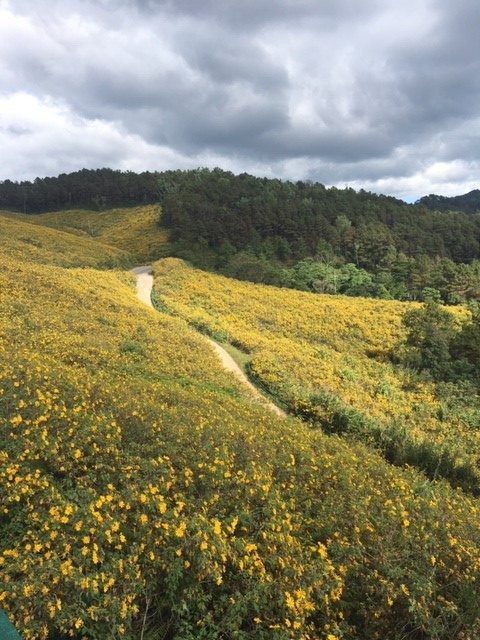
We then jumped to the Mae Surin Waterfall that was very close by – about a 20-minute drive. It’s Thailand’s highest waterfall at about 100 meters (328 feet). Another spot that was worth seeing.
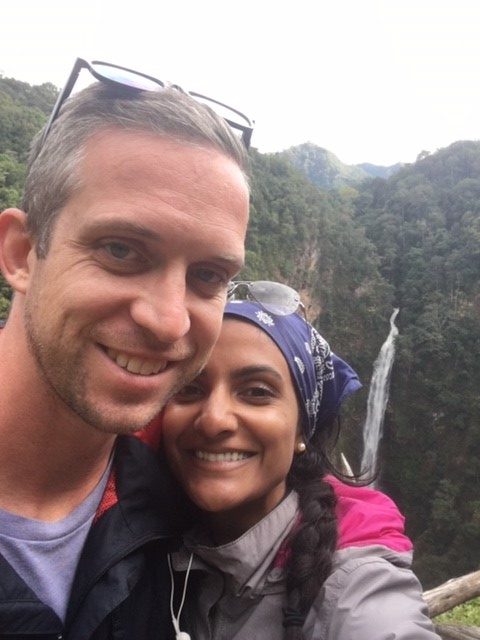
Unfortunately, in order to get back on the main road (route 108), you have to backtrack for about an hour. The adventurous folks can choose the more “off the beaten path” route by taking route 4009. The adventurers in us were up for the challenge and we also wanted to keep things moving, so going back down the same road for an hour was not the most appealing option. Be forewarned, route 4009 is a bit challenging and there were a few very rough patches of dirt road with deep crevices. I think the locals were utterly surprised and shocked to see us on this road (*pats self on the back*). Since we were traveling through the mountains, we reached some of the tallest peaks, with the setting sun as a backdrop. Stunning.
After about an hour, we hit route 108 again and made a stop at Pha Bong Hot Spring, which is about 10 km (6 miles) south of Mae Hong Son. Unfortunately, the hot spring was closed for cleaning, which they do once a week. Bummer. It was probably for the better anyway because we realized that the hotel we booked was in Mae Hong Son district (actually located in Soppong) and not in Mae Hong Son town, which was another hour and a half and it was already getting dark. Ugh. We also attribute this error to the misleading information posted on the hotel’s website. In any event, we were a bit distressed to realize that we were homeless for the night and probably going to have to eat the cost of the night in Soppong. We decided to find a restaurant in town, hook up to the Wi-Fi, and find a spot for the night.
We ate at Salween River Restaurant, which had really yummy food. It also borders the night market so after eating, we took a few steps into the stalls that had everything from hand-woven scarves, mouthwatering Thai and Burmese food, to souvenirs like Mae Hong Son Loop shirts that we bought. What a great way to memorialize our week-long trek on the loop.
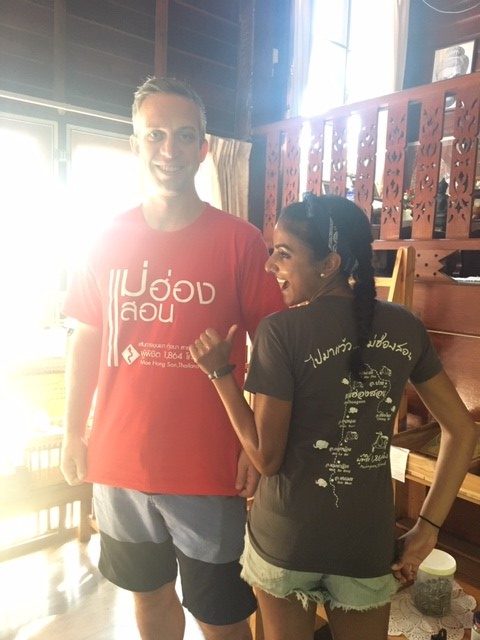
The night market surrounded the Nong Jong Kham Lake, which reflected the lights of the market stalls and the adorned trees, adding a certain charm to the town.
Accommodations
Fortunately, we were able to book a place last minute for a reasonable amount: $18. We stayed at Ban Phumon Talang Resort, which we would recommend if you’re staying in the town. It includes breakfast, but we decided to skip it and get breakfast in town.
3. Mae Hong Son to Soppong
The next morning, we ate breakfast at a place called Little Good Things, a cute little vegan spot, and I can’t say enough good things about this spot. We had the porridge, chocolate banana shakes, and coffee, which were all delicious. It was the best breakfast we’d had during our travels and the owner was very social and even sat with us for a little to chat
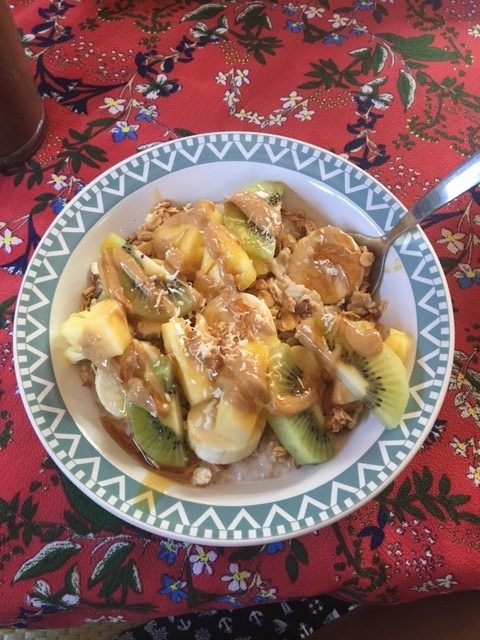
We then took the bike to see the Wat Phra That Doi Kong Mu, which sits atop a mountain. It’s the best thing to see in Mae Hong Son and the vantage point is a great way to get an eagle-eye view of the town. Since there was still a bit of time in the day, we went to Ban Rak Thai, a Kuomintang village near the Myanmar border. In the 1950s, Chinese nationalist troops (KMT) fled China after their defeat in the Chinese Civil War and settled along the border here. That is why you’ll see a lot of Chinese influence in the town. It’s a bit out of the way, but it’s worth the uphill climb to the secluded town. The town is very unique with the omnipresent Chinese influence, green tea, and beautiful setting – it’s surrounded by tea plantations and is centered around a lake. We had Chinese food for lunch, which was a nice break from Thai food.
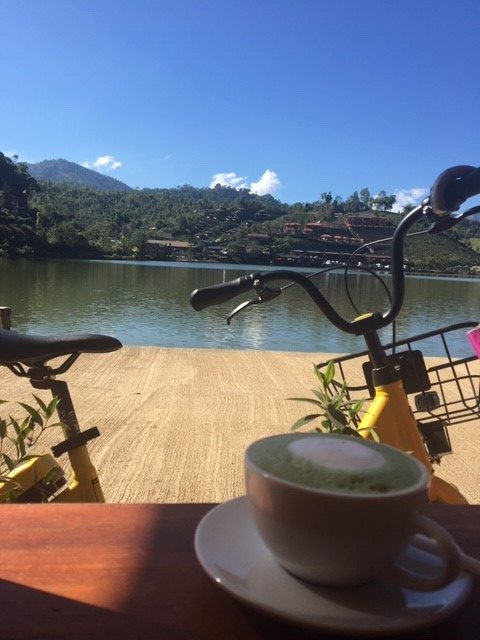
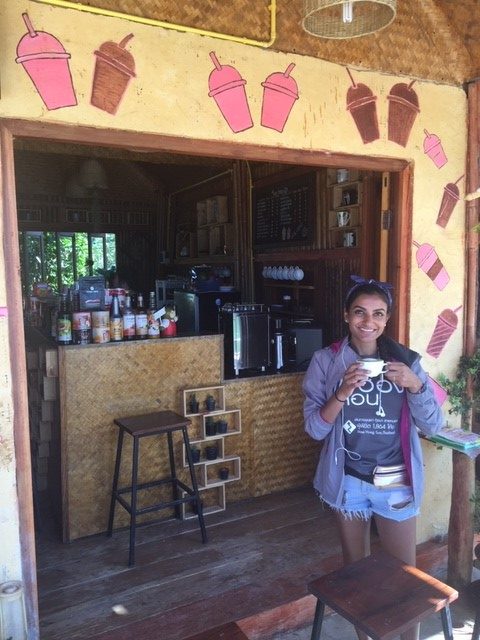
Before heading to Soppong, we backtracked a little to go to the Pu Khlon Country Club & Mud Spa since we missed the hot springs the day before. The mud spa has mixed reviews, and we could see why. They nickel and dime you for the experience, and you are instantly bombarded with eager staff wishing to sell you a package, none of which include the hot springs. Since we weren’t interested in the mud treatments, which we heard were just okay, we opted for a 15-minute soak in the hot spring for 60 THB ($2).
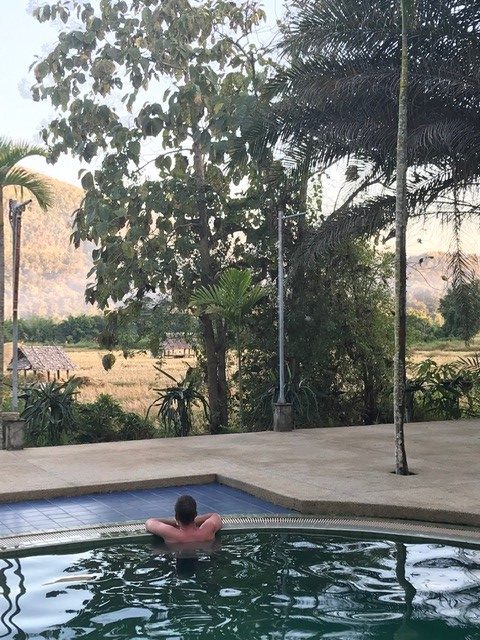
After our dip, we jumped back on the bike to head to Soppong, which was a 1 ½ hour ride away. Unfortunately, we left a bit late so we had to make part of the windy trek in the dark. The temperature dropped quite considerably to 50 degrees Fahrenheit (10 degrees Celsius) and neither of us had warm enough clothes so we were frozen by the time we arrived in Soppong (hence our suggestion to bring a pair of jeans and a fleece). It was a brutal ride.
Soppong was a town not worth writing home about. It was in a remote village with very little development. Some tourists choose to stay here because of its proximity to Pai and it’s the quiet alternative. A little too quiet. We were itching to do something during the day and regretted not moving on to Pai sooner, but because we were locked into two nights (if you recall we thought we were staying in Mae Hong Son town when we booked) we had to suck it up.
Accommodations
We stayed at Little Eden Guesthouse, which made our time in Soppong all the more irritating. The place was owned by a couple – a Thai woman and her German husband – who were unfriendly and mostly in the background silently watching us as we went about our business. Creepy. The vibe felt like we were intruding at their house as unwanted guests. It made for a very awkward experience.
The local staff seemed to be running the place and were the ones who greeted us and served us breakfast in the mornings. Upon checking in, one of the staff told us that we could trade up for a nicer room versus the bungalow, which was very rustic. It was a bit pricey at 700THB ($21) per night, but the nicer room was warm and welcoming so we decided to upgrade. We were also told that breakfast was included. Unfortunately, upon checking out, we were shocked to find that the information had changed and that we were now obligated to pay for breakfast, which was an incredibly steep price for the town – about 900THB ($27) total. It was a very unpleasant surprise. Upon insisting that we were told that it was included in the price of the room, we were told that we were incorrect and had to cough up the money. Bottom line, don’t stay here.
4. Soppong to Pai
We left Soppong as soon as we could to head to Pai. On the way to Pai, we recommend stopping at Tham Lod, which means “throughway cave” because of the two openings and the river that runs through it. It’s located about 10 km (6 miles) from Soppong. It was one of the most impressive caves I’ve seen, and that’s saying a lot since caves seem to be popular attractions in this part of the world. We paid 450THB ($14) for the guide and bamboo raft that takes you through part of the cave. The cave had different things to offer from its impressive stalactite and stalagmite formations, ancient wood coffins, thousands of bats, and numerous, large catfish that you can feed while on the bamboo raft (this made me a little squeamish, because they’d swarm around the boat for food). Overall, it was worth it.
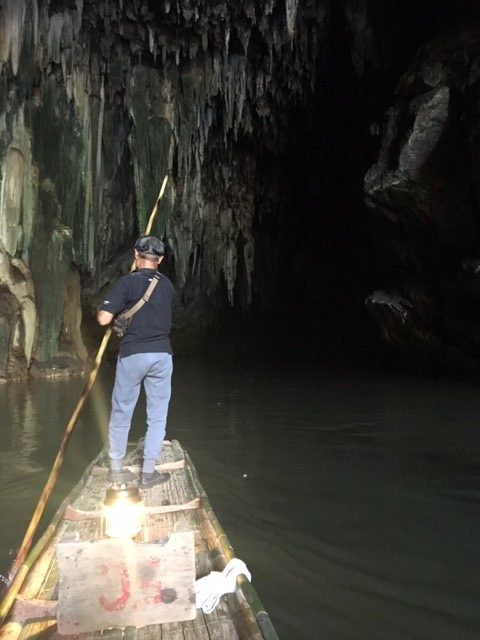
We then moved on to Pai, which was about a 45-minute drive. We were pretty excited about this leg of the trip because we heard that it was a cool spot with a hippie vibe. You know you’ve arrived in Pai because everything starts to look very bohemian and admittedly touristy – there are tons of backpackers that converge on this little town.
Once we checked-in to our hotel, we went to see the sunset at Pai Canyon. Pai Canyon is a rocky landscape with trails that lead you through narrow rock cliffs that hang precariously in the air. I let Mike test out the trail while I stayed behind – my fear of heights kicked-in and the throngs of tourists didn’t help assuage my phobia. I got a great shot of Mike that you can see on the slider at the top of our home page. The highlight of Pai Canyon was the sunset, which is what everyone staying in the town seems to do as well because it was a zoo. We were lucky enough to find our own bench with a decent view of the setting sun.
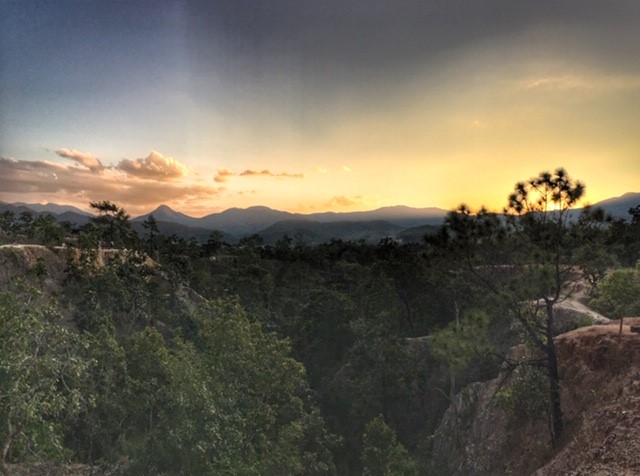
Pai has a great nightlife and food scene, which you can see on the walking street. Mike was finally able to get his craft beer that he had been longing for since leaving home. If you’re familiar with Thailand’s beer situation, then you know that their market is dominated by Thai beers like Singha, Leo, and Chang. You’ll be hard pressed to find anything else, and if you do, it will come at a cost. Jikko Beer is a little open-air bar situated in the heart of the walking street area. We had great conversation with the bartender and a selection of numerous imported beers from the U.S., Germany, Belgium, etc.
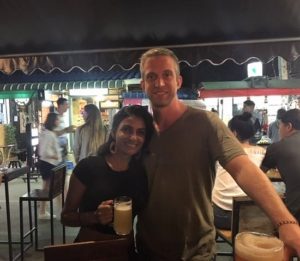
If you find that you’re in need of a good read while traveling, stop by Siam Used Books. I have to put in a quick plug for good books since I love to read. They have an eclectic selection of used reading material that ranges from the classics to crossword puzzles. I got Hemingway’s novel, An Immovable Feast, and All the Light We Cannot See by Anthony Doerr. Mike got Robinson Crusoe. You can find used bookstores like this while you travel and you can exchange your books for other ones, which we plan to do along our journey.
If you only plan on visiting Pai on the Mae Hong Son Loop, which many tourists do, then you can rent a motorbike from Chiang Mai and make the windy journey up to Pai, which is about a 4-hour drive. Pro tip: if you’re a novice on the motorbike, just know that there are many hairpin turns that can make the journey challenging. We did see a few people in Pai who were a bit banged up.
Accommodations
Unfortunately, we had two strikes in a row. We can’t recommend the place in Pai where we stayed. The name of the guesthouse was Ever Green Guesthouse. We really paid too much for what we got. The guesthouse was very rustic with paper thin walls. We were woken up several times in the early morning by the people next door – how they had so much energy for a full-blown conversation at 4am is beyond me. The staff were mostly absent and the room wreaked of urine and sewage. I couldn’t tell if the smell of urine was coming from the bathroom or the mattress *shudders*.
5. Pai to Chiang Mai
The last leg of our trip was the windiest from Pai to Chiang Mai, but it was also the most fun. We made the journey in 4 hours with the most ideal weather conditions.
Mae Hong Son Loop Conclusion
The Mae Hong Son Loop was one of the most memorable experiences. Not only did we feel very accomplished to have conquered the entire loop and its 1864 curves on a motorbike, but we witnessed some of the most beautiful landscapes in Thailand, often with very few tourists around. Mike and I also became a stronger team.
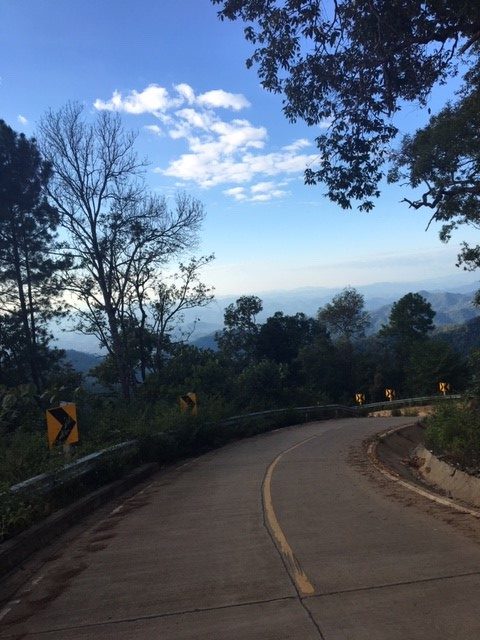
We had to work together and communicate in ways that we never had before. For example, I gave Mike positive encouragement when we hit some challenging parts of the ride like rough patches in the road and bitter cold temperatures. I also served as Mike’s trusty co-pilot throughout the journey. If you have the time, I would strongly recommend doing the Mae Hong Son Loop in 6-7 days so that you can thoroughly enjoy the journey and give yourself time for breaks.
